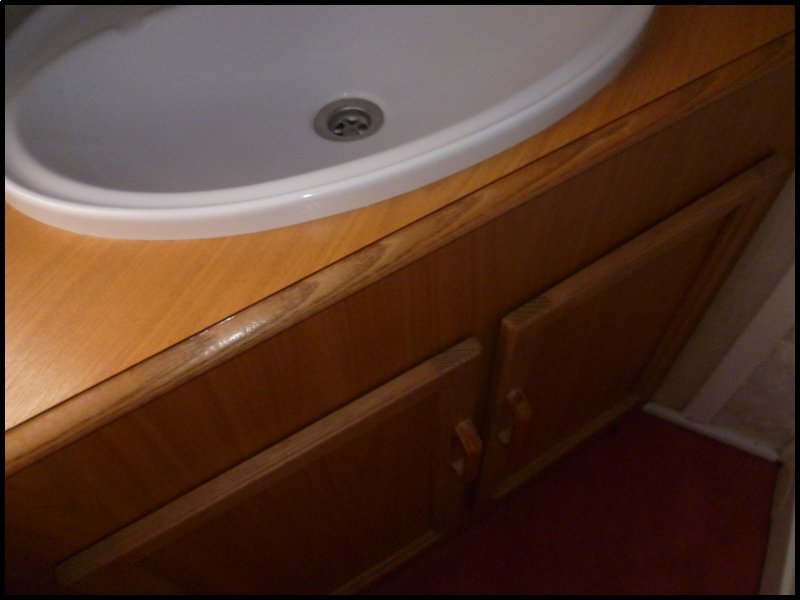Some of the wooden edging strips where they had been constantly wiped with a damp cloth were looking very tired after 13 years of use. I started by rubbing down the edges with fine wire wool. Don’t use glass paper. It will take off the high spots. Because the wire wool takes up the shape of the moulding, it keeps the rubbed surface even. After dusting off and wiping down with a damp cloth, I left the job till the next day to dry. The edge mouldings were now going to be sprayed, so the worktop was masked off with tape up to the moulding and newspaper was added to protect it from over spray. The underside and doors were also masked. With the masking done, a can of clear lacquer – the type bought in Halfords and used as the top coat on metallic paintwork – was used.


The spray needs to be done down the length of edging quickly in just one wipe from a distance of around six inches. Do more and it will run and start to sag. After a couple of minutes, a second wipe is given, and a few minutes later, a third, then a fourth. If you are not familiar with spray cellulose, the spray jet is cleaned by inverting the can and spraying until it clears. Then the can will be workable next time you need it. Carefully remove the newspaper and masking tape and leave the job for a couple of days to harden. (Also you’ll want to get out of the heavy atmosphere left in the van.) A couple of days later, some fine wire wool well lubricated with wax polish was lightly rubbed over the edging and a few minutes later buffed with a polishing cloth. The wax polish I used was a mix of beeswax, carnauba and white spirit, but any light-coloured shoe polish would do.